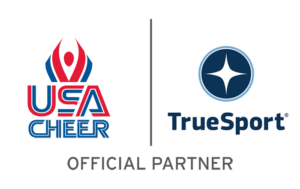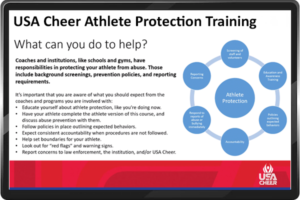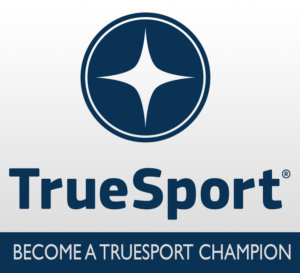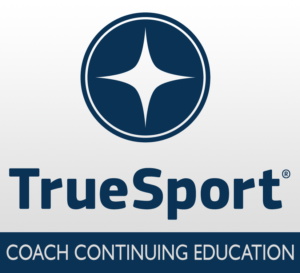What is misconduct in sport and how can you respond?
USA Cheer has partnered with TrueSport, to provide new educational tools to equip coaches, parents and young athletes with the resources to build life skills and core values for success in sports and in life. TrueSport, a movement by the U.S. Anti-Doping Agency, inspires athletes, coaches, parents, and administrators to change the culture of youth sport through active engagement and thoughtful curriculum based on cornerstone lessons of sportsmanship, character-building, and clean and healthy performance, while also creating leaders across communities through sport.

What is misconduct in sport and how can you respond?
 While sport should be a safe place for athletes to grow and thrive, the devastating reality is that there are times when that’s not true. That is why it’s so important for the many adults who surround young athletes to understand what qualifies as misconduct, intervene when necessary, and report information to authorities.
While sport should be a safe place for athletes to grow and thrive, the devastating reality is that there are times when that’s not true. That is why it’s so important for the many adults who surround young athletes to understand what qualifies as misconduct, intervene when necessary, and report information to authorities.
While intervention and reporting may be uncomfortable, the most important thing you can do for your athlete is protect them, and it’s your responsibility as a parent, coach, official, or other present adult to educate yourself and act. According to the U.S. Center for SafeSport, here’s what you need to know about recognizing, responding to, and reporting abuse and misconduct.
RECOGNIZE Abuse and Misconduct
Recognizing abuse and misconduct is a critical first step to both preventing and responding to it. To start, it’s important to realize that abuse and misconduct can happen between an athlete and many different people, including another athlete, a coach, coach’s assistant, athletic trainer, or physical therapist.
We’ll cover the types of misconduct and abuse below, but keep in mind that even if you can’t label a behavior or it doesn’t violate a policy, you should always report anything that concerns you. Additionally, while the below are referred to as misconduct, they can all be considered child abuse depending on severity, as per federal and/or state law.
- Emotional Misconduct: Emotional misconduct can include both verbal and physical acts, from name-calling to throwing equipment at an athlete. Stalking and denying support can also be considered emotional misconduct.
- Physical Misconduct: Physical misconduct is any behavior that does or could lead to physical harm, which includes both contact and non-contact acts. Examples include punching, knowingly letting athletes return to play after injury without medical clearance, and withholding food or water.
- Sexual Misconduct: Sexual misconduct includes a wide range of sexual actions that are done without consent. It also includes grooming, sexual harassment, nonconsensual sexual contact or intercourse, sexual exploitation, exposing a minor to sexual content/imagery, sexual bullying behavior, and sexual hazing.
- Bullying: Bullying involves repeated and severe physical, verbal, social, or sexual behaviors, including name-calling, spreading rumors, taunting, or ridiculing someone based on gender or sexual preferences.
- Harassment: Harassment refers to repeated or severe conduct that causes fear or humiliation, degrades an athlete, creates a hostile environment, or attempts to establish superiority based on an athlete’s age, race, ethnicity, culture, religion, national origin, or disability.
- Hazing: Hazing involves physical, mental, emotional, or psychological conduct that could intimidate, degrade, abuse, or put an athlete in danger in order to be socially accepted. This could include conduct like making people play drinking games, physically restraining them, or depriving them of water, food, or sleep.
RESPOND to Abuse and Misconduct
If you witness or know about misconduct or abuse, never assume that someone else is taking care of it. Be sure to intervene and put an immediate stop to any misconduct or other harmful behavior you witness. If you learn about misconduct after the fact, determine if it has stopped, and if not, take action to stop it.
As you prepare for your role as an active bystander and/or mandatory reporter, keep these best practices in mind:
- Understand your sport organization’s policies and know what actions to look for, how you are expected to respond, and how to report.
- Regularly discuss acceptable and unacceptable behavior and hold everyone accountable for their behavior.
- Respond quickly to inappropriate behaviors to prevent escalation and continued harm.
- Respond consistently to misconduct you witness or learn about so there is no confusion about boundaries and accountability.
- Consider the developmental level of those involved when identifying acceptable behaviors and responses to those behaviors.
 If abuse is disclosed to you, respond with these best practices in mind prior to reporting:
If abuse is disclosed to you, respond with these best practices in mind prior to reporting:
- Listen with empathy and let the athlete tell you the details they want to share at their own pace. Keep your body language and facial expressions open and non-judgmental.
- Thank them for telling you and trusting you.
- Remind them that you and others are here to help.
- Inform them of your next steps, including who you will report the information to. Remember, even if a child does not want the incident reported, mandatory reporters must follow legal reporting requirements.
If abuse is disclosed to you, do NOT:
- Doubt the accuracy of the report. Remember that false reports of abuse are very rare.
- Ask leading questions. Only ask open-ended questions and let the athlete tell you what happened in their own words.
- Call a child’s parents. Let authorities like child protective services identify when to communicate with parents and the appropriate steps needed to ensure a child’s safety.
- Check with other people to uncover more information or confront the perpetrator, as this can jeopardize the athlete’s safety.
REPORT Abuse and Misconduct
To best protect athletes, report abuse or suspicions of abuse immediately and regardless of your mandatory reporter status. Make sure you familiarize yourself with federal and state reporting requirements, as well as SafeSport reporting requirements.
For adults affiliated with the Olympic and Paralympic Movement, the SafeSport Code requires you to first follow applicable state or federal laws around reporting abuse and misconduct, but also to report:
- Child abuse, including child sexual abuse, immediately to law enforcement and the U.S. Center for SafeSport
- Sexual misconduct regardless of age immediately to SafeSport
- Emotional and physical misconduct (including bullying, hazing, and harassment) to your National Governing Body or SafeSport
- Violations of proactive prevention policies (such as the Minor Athlete Abuse Prevention Policies) to your National Governing Body
- (USA Cheer note: USA Cheer safeguarding and reporting links can be found here.)
Your athlete’s team should have an abuse prevention policy already in place, which should include detailed instructions for reporting suspicions of abuse. If you haven’t seen this policy, ask the coach. Often, part of the reason abuse and misconduct are allowed to continue is that they are reported to the wrong people. Don’t automatically go to the athlete’s parents, the school administrator, or the coach.
If you’re unsure who to report to, go directly to local law enforcement, where they are better trained to handle these situations. You can also direct questions about abuse and misconduct to the SafeSport Helpline at 866-200-0796 or safesporthelpline.org. More information on reporting to the U.S. Center for SafeSport can be found here.
Takeaway
Additional resources on recognizing, responding to, and reporting abuse are available here. Other local and national organizations are also available to help, including RAINN, the nation’s largest anti-sexual violence organization.
What is TrueSport?
The TrueSport Champion Network is a community of coaches, parents, program directors, and athletes who believe in the power of youth sport to build life skills and core values for success both on and off the field. Join TrueSport Champion Network to help promote the positive values of cheer, dance, and STUNT!
The TrueSport Coaching Education Program empowers coaches—the most significant influencers in young athletes’ lives—with a transformative learning opportunity to obtain the knowledge and resources to cultivate, champion, and uphold the rich promise and highest potential of sport.
Additional Training Modules from TrueSport
USA Cheer is proud to partner with USADA’s TrueSport® to bring relevant educational content to the Cheer and STUNT community in order to promote a positive youth sport experience. We are excited to provide access to TrueSport’s experts that take coaching beyond skills and help truly develop the overall athlete by building life skills and core values for success on and off the mat, sideline, field, and court.
Feel free to share these resources with your coaching staff, parents, or athletes!
About TrueSport
TrueSport®, a movement powered by the experience and values of the U.S. Anti-Doping Agency, champions the positive values and life lessons learned through youth sport. TrueSport inspires athletes, coaches, parents, and administrators to change the culture of youth sport through active engagement and thoughtful curriculum based on cornerstone lessons of sportsmanship, character-building, and clean and healthy performance, while also creating leaders across communities through sport.
For more expert-driven articles and materials, visit TrueSport’s comprehensive library of resources.
This content was reproduced in partnership with TrueSport. Any content copied or reproduced without TrueSport and the U.S. Anti-Doping Agency’s express written permission would be in violation of our copyright, and subject to legal recourse. To learn more or request permission to reproduce content, click here.



